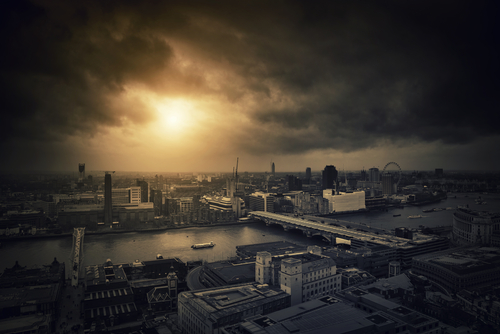
In a striking blend of fiction and reality, a recent Netflix movie produced by former President Barack Obama, titled "Leave the World Behind," has ignited a firestorm of debate and speculation. The film, which features a catastrophic scene eerily reminiscent of the real-life collapse of the Francis Scott Key Bridge in Baltimore, has drawn attention not only for its content but also for the timing of its release. Critics and commentators are dissecting the implications of this coincidence, with conservative voices raising questions about the deeper meanings and potential messages embedded within the film.
The controversy began shortly after the tragic collapse of the Key Bridge, when veteran and former fraud investigator Jimmy Corsetti highlighted a specific scene from Obama's movie. In this scene, a massive cargo ship named "White Lion" crashes into a beach following a cyber attack, an event that mirrors the real-world incident involving the Dali cargo ship en route to Sri Lanka. This parallel has sparked intense discussion and theorizing among observers, with some suggesting that the film could be foreshadowing or symbolically representing contemporary security concerns.
One photo is from the Obama produced movie “Leave the world behind”
The other is reality.
Coincidence? pic.twitter.com/5rJoCN3Psg
— AG 🔥 (@Yolo304741) March 26, 2024
Matt Walsh, a prominent conservative commentator, has entered the fray, addressing the theories circulating around the film's connection to the bridge collapse. Walsh vehemently dismissed the notion that the movie's plot could be intentionally linked to real-world events, criticizing such theories as baseless and harmful to the credibility of conservative discourse. He argued that attributing such a coordinated effort to Obama, complete with supposed clues for right-wing theorists, is not only far-fetched but also detracts from serious political dialogue.
Despite Walsh's skepticism, Corsetti defended his position, urging a closer examination of why a former president would choose to produce a film centered on a doomsday scenario triggered by a cyber attack. He pointed to the use of symbolism and foreshadowing in media, suggesting that these elements could be employed by various factions for their own purposes. This perspective underscores a broader concern among conservatives regarding the narratives and messages propagated through popular culture and their potential impact on public perception and national security.
Listen to what New York Yankees Minority Owner Patrick Bet-David had to say about Barack Obama's movie.
Do you think it's a coincidence that the movie is playing out in real life?
— Red Pill USA (@Red_Pill_US) March 27, 2024
The film itself concludes with a revelation that the depicted disasters, including the cargo ship crash and subsequent cyber attacks, are part of a three-stage plan aimed at destabilizing the United States. This narrative choice has further fueled speculation and concern over the possible real-life implications of such scenarios, especially in an era where cyber warfare and geopolitical tensions are at the forefront of national security discussions.
The debate over "Leave the World Behind" and its parallels to the Baltimore Key Bridge collapse highlights a growing skepticism towards the entertainment industry and its role in shaping political and social narratives. Conservatives, in particular, are wary of the potential for films and other media to subtly influence public opinion or reflect undisclosed agendas.
As the conversation continues, it is clear that the intersection of politics, entertainment, and real-world events remains a contentious and complex domain. While some dismiss the connections between Obama's film and the Key Bridge collapse as mere coincidence, others see it as a prompt to remain vigilant about the messages being disseminated through popular culture. Regardless of one's stance, the controversy serves as a reminder of the power of narrative and the importance of critically engaging with the media we consume.
In conclusion, the discourse surrounding "Leave the World Behind" encapsulates the broader tensions and challenges facing conservative commentators and the public at large. As we navigate an increasingly interconnected and digital world, the lines between fiction and reality blur, raising essential questions about the role of media in our lives and the potential consequences of the stories we tell.












